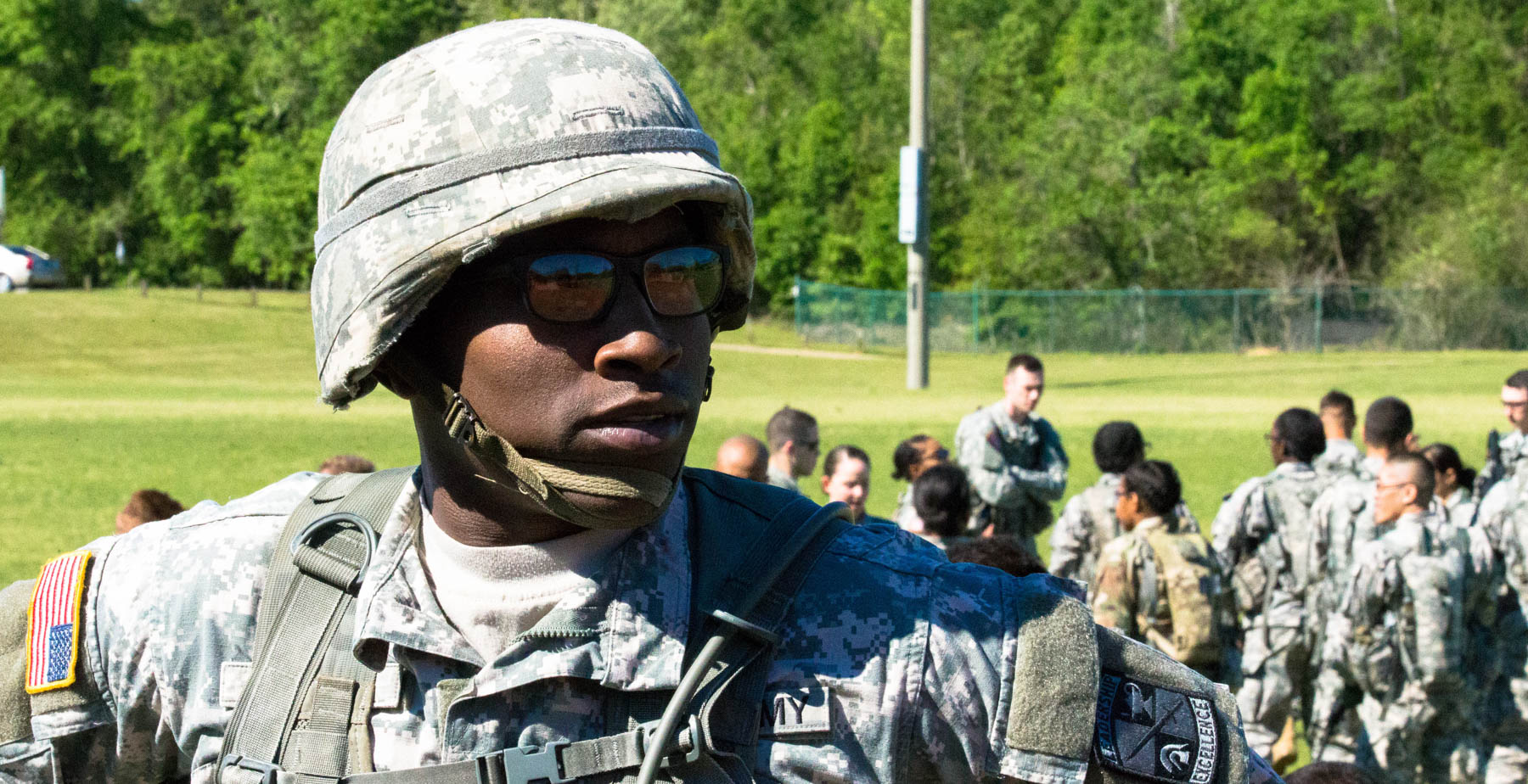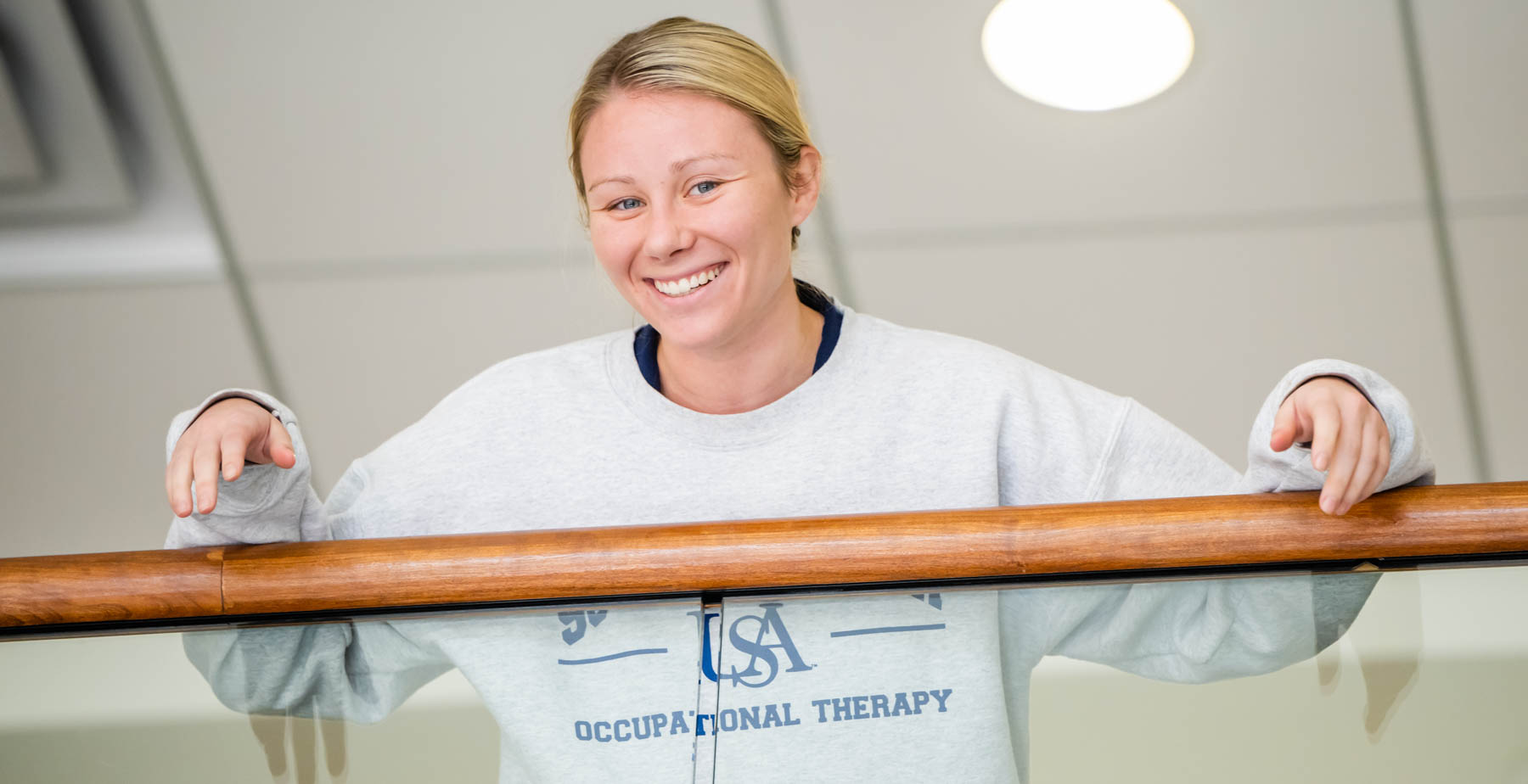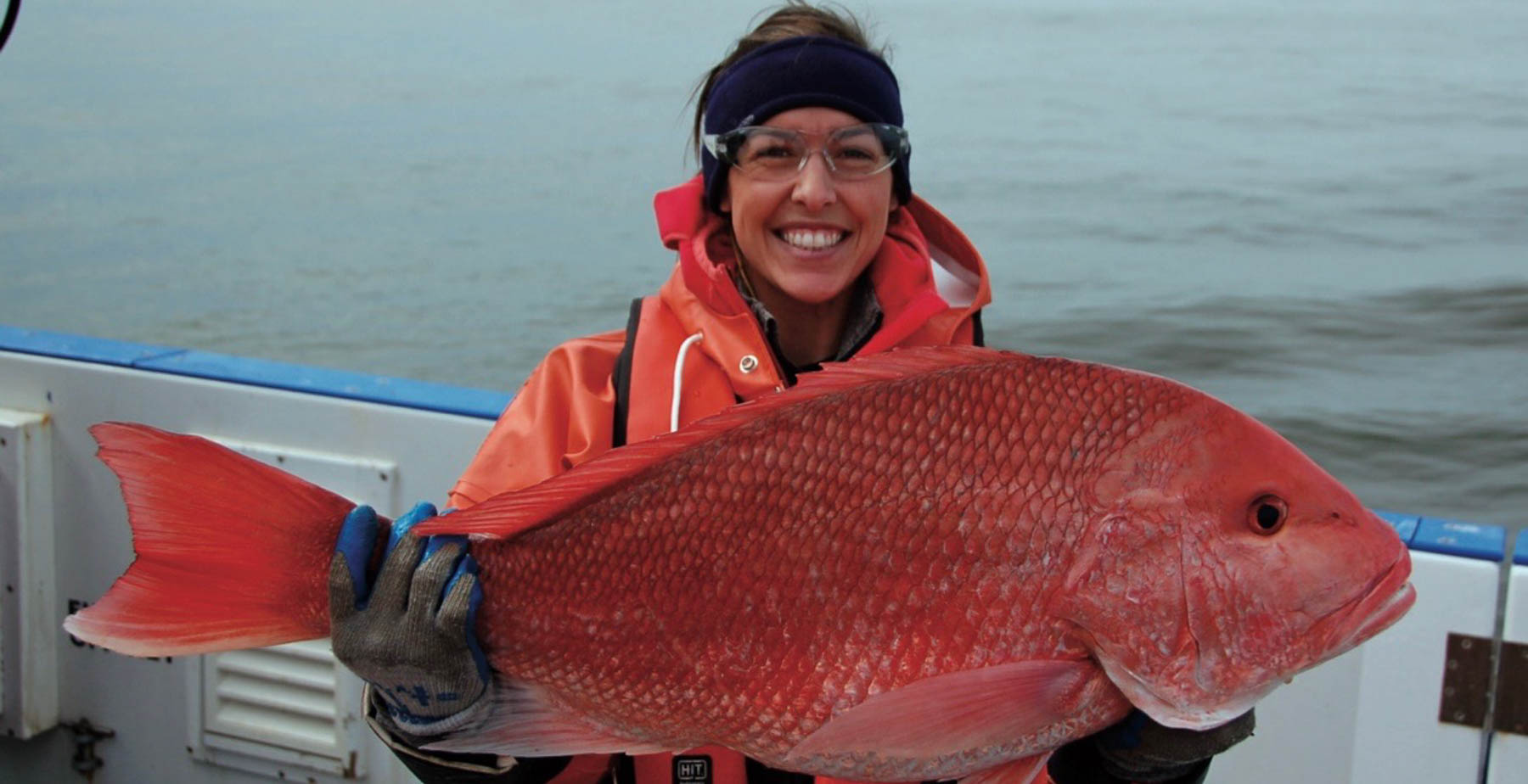'Fishmas' in July
Posted on July 23, 2024
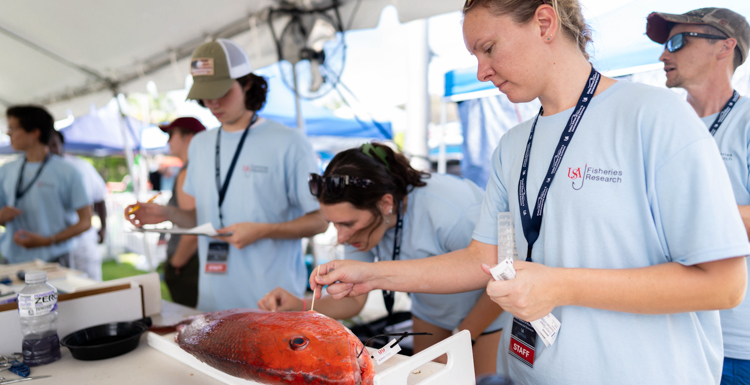
Beneath the white tent next to the weigh station at the Alabama Deep Sea Fishing Rodeo on Dauphin Island, it was organized chaos as students wearing pale blue “USA Fisheries” T-shirts waited to see what fish would come to them next.
On the first morning of the 91st annual event, billed as the world’s largest fishing tournament, a steady drizzle kept the heat away. By midday, as anglers arrived at an increasingly steadily pace to unload their catch, the dark clouds had parted and a blue sky took their place. For the students working in six different stations, each boat held possibility.
“This is one of our busiest times of the year,” said Manuel Coffill-Rivera, a Ph.D. student in the Stokes School of Marine and Environmental Sciences at the University of South Alabama. “It seems chaotic, but there’s a method to our madness.”
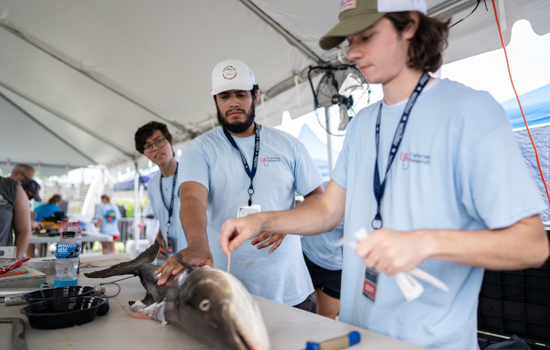 Manuel Coffill-Rivera, center, prepares to remove samples from a large Cobia caught
at the 91st annual Alabama Deep Sea Fishing Rodeo on Dauphin Island on the tournament's
opening day.
Manuel Coffill-Rivera, center, prepares to remove samples from a large Cobia caught
at the 91st annual Alabama Deep Sea Fishing Rodeo on Dauphin Island on the tournament's
opening day.
Coffill-Rivera was working in the tent as part of a team led by Dr. Sean Powers, Angelia and Steven Stokes endowed professor in environmental resiliency and director of the marine sciences school. The lab was taking samples from specific fish to study reproductive dynamics and basic life history. From muscle and eye samples, the students can determine a lot of information about the fish, from what they’re eating to their movement dynamics.
Suddenly, a student rushed a large cobia into the tent.
“Dibs!” yelled Coffill-Rivera. After situating the fish on the table in front of him, he expertly plunged a knife into its belly. “These are the gonads,” he said seconds later, holding them in his bloody hand. “So this is a female fish. We’ll use this to do histology on the reproductive phase of fish.”
Next, he removed the fish’s eyeballs to remove and study the lenses. As other students cleaned and bagged the samples he’d retrieved, he sawed into the fish’s neck to find the otoliths, or ear stones, which are present from birth and grow out as the fish grows. “This is the primary method of aging fish,” Coffill-Rivera said. “We take a cross-section and count the growth rings. We also look at what elements have accreted into the otolith. That helps us with understanding their ecology.”
Most of the fish being caught and sampled at the rodeo on the first morning were from anglers fishing inshore. The students were looking forward to larger fish coming in late in the afternoon from offshore boats, and even more on Saturday and Sunday from more tournament participants.
‘An amazing opportunity to collect data’
The University of South Alabama has been involved in the fishing rodeo since 1989, when two competing fishermen argued about what type of fish they had caught.
“They were about to come to blows,” said Powers, who has served as a judge at the annual event for the past 10 years. His predecessor, Dr. Bob Shipp, who was at the Dauphin Island Sea Lab at the time, was lured in to identify the species: a white marlin.
The fishing rodeo started with a cannon blast at 5 a.m. on Friday, July 19, and ended at 5 p.m. on Sunday, July 21, with 4,000 anglers competing for 33 species of fish — some of which, like the juvenile blue marlin and the white marlin, look very similar. That’s when scientists come into play to give an objective determination of the species and its weight.
“Thirty-three species represent an amazing opportunity to collect data,” said Powers. “Here, I have the best fishermen in the region collecting fish for free for me.”
At this year’s fishing rodeo, graduate students sampled a variety of fish from the Gulf of Mexico, with a focus on red snapper, grouper, flounder and speckled trout. “The fish aren’t being wasted,” Powers said. “They’re used to advance science.”
Marine science students refer to the rodeo as “Fishmas,” he said. “It’s like Christmas for us geek fishery students.”
About 20 graduate students, along with some 50 undergraduate volunteers and faculty members from South as well as eight other universities, participated in the event. “All our colleagues are always jealous,” Powers said. “We coordinate all the science that goes on.”
Students holding clipboards conducted social science surveys with some 300 anglers under the leadership of Dr. Steven Scyphers, an associate professor who studies the social component of fisheries with several Ph.D. students in his lab. “We do the survey every year,” he said. “There’s always some issue we want to know about.”
One of Powers’s favorite categories in the tournament is “Most Unusual Fish.” “Dr. Shipp started it years ago,” he said. “We get incredibly cool fish — frog fish, snake mackerels, scorpion fish, things students would never get to see.”
This year, the most unusual fish was a blunt head puffer. “Dr. Shipp described that as a new species in 1969,” Powers said. “Bob always lamented that he never saw that species turned in. Now we have it. Kind of poetic given the passing of Dr. Shipp this past year.”
Powers estimated that 3,000 to 4,000 fish are weighed in each year, with almost 1,000 fish sampled. The tournament is sponsored by the Mobile Jaycees, who have donated more than $500,000 to South’s marine science program, Powers said.
There were hands-on opportunities for spectators at the rodeo, too. Between the weigh-in station and the labs was the “ice box,” filled with bags of ice and recently caught, labeled fish — bonito, gafftopsail catfish, red drum, white trout, sheepshead and a large stingray, among others.
“This is a sampling of different fish for the public to see and touch and ask questions about,” said Dr. Amy Sprinkle, an assistant professor who serves as the undergraduate program coordinator at the Stokes School. “This is always a fun weekend.”



